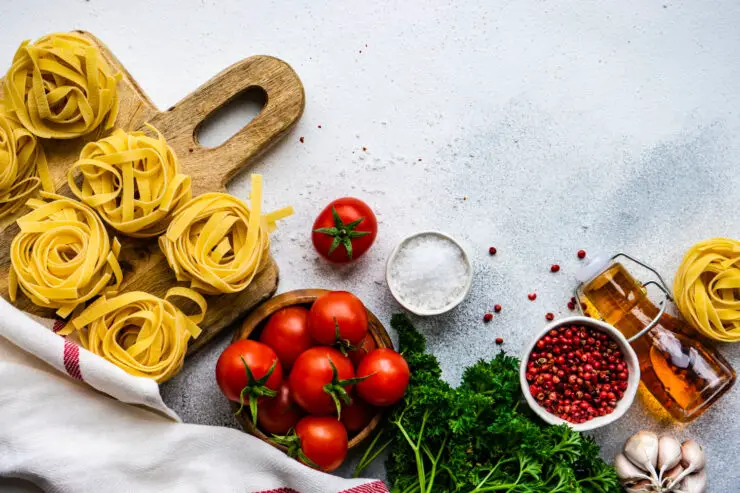As an Amazon Associate I earn from qualifying purchases. Please read the disclaimer for more info.
In the world of pasta, fettuccine and linguine are two popular types that often cause confusion.
Linguine noodles, originating from the coastal regions of Liguria, are long spaghetti-like noodles that are almost flat and narrower than fettuccine. It’s versatile and pairs well with light sauces due to its thin structure, similar to spaghetti.
On the other hand, fettuccine noodles, hailing from Marche’s rolling hills, are wider and flatter than linguine. Its hearty and filling nature makes it ideal for heavier and thicker sauces. Fettuccine’s width measures 1/4 inch, while linguine is narrower.
The ingredients also play a part in the linguine vs fettuccine debate. Fettuccine is a high-quality egg noodle pasta, while linguine is a simple flour and water-dried pasta.
The choice between fettuccine and linguine boils down to your choice of sauce and personal preference. Both have their unique characteristics and uses in different dishes.
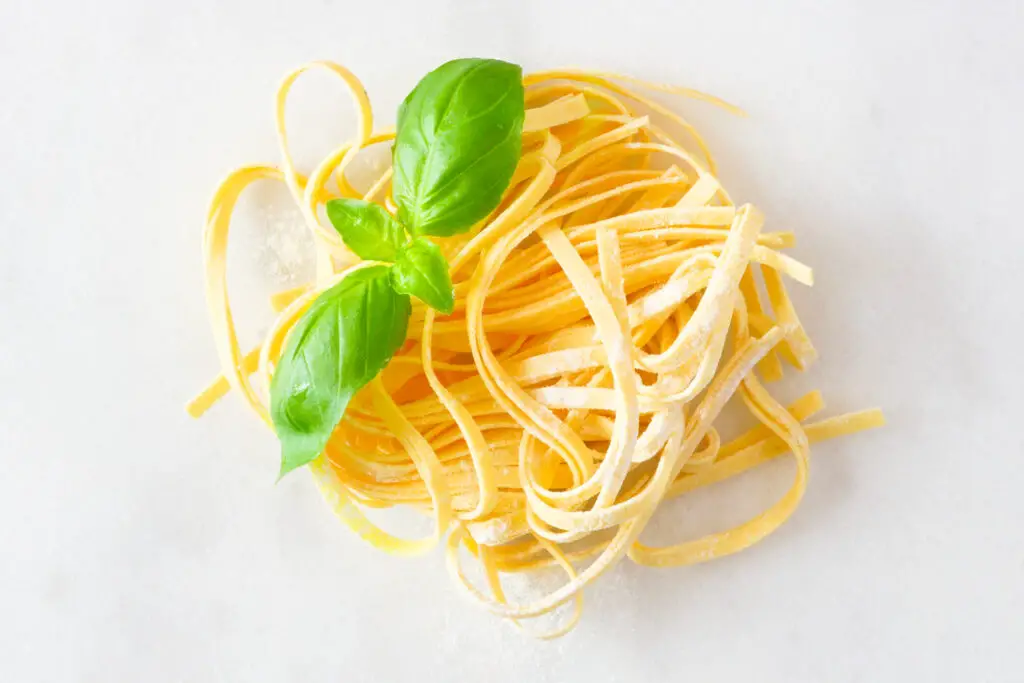
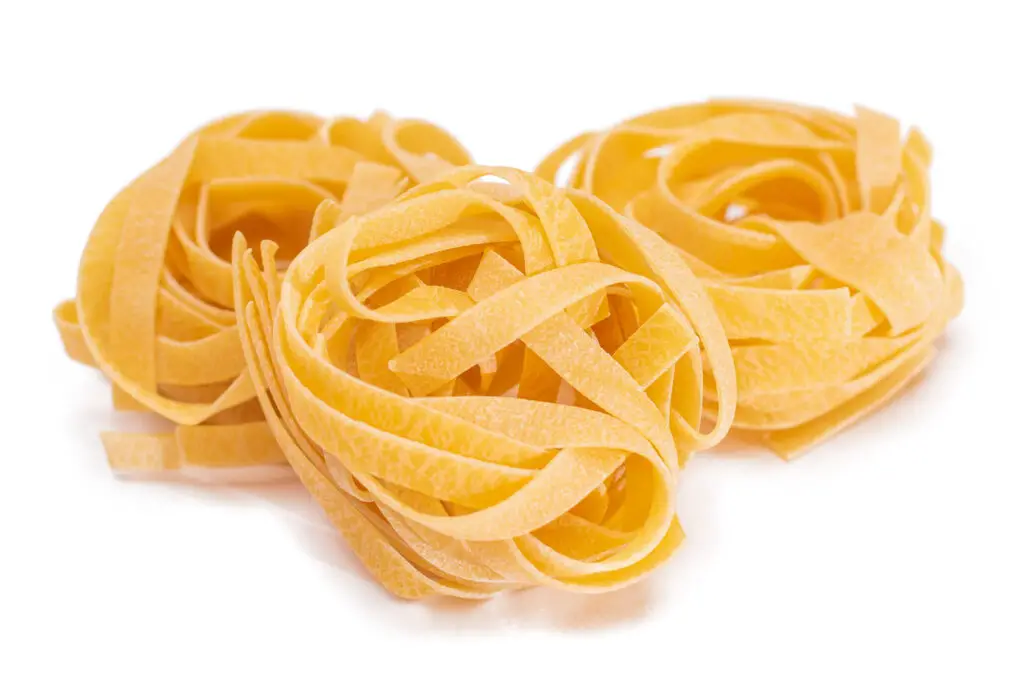
Fettuccine vs Linguine: Historical Origins
Before diving into the specifics, it’s essential to know that linguine and fettuccine are deeply embedded in Italian culture, each with its unique evolution over the centuries.
Origins in Italy
Fettuccine and linguine originated in Italy, a country renowned for its rich pasta tradition. Fettuccine is believed to have been made popular in Rome. As a broader pasta, its texture is perfect for thick, hearty sauces. Linguine, on the other hand, hails from the coastal regions of Liguria and Genoa, where lighter, seafood-based sauces are common companions for this thinner, delicate pasta.
Evolution of Pasta Shapes
Over time, the pasta maker has been instrumental in the evolution of pasta shapes. With creativity and practicality, they have honed their skills to create a diverse pasta landscape. The varying shapes are designed to serve specific purposes in Italian cuisine, adhering to regional sauce preferences and cooking styles.
Fettuccine and Linguine in Italian Cuisine
In Italian cuisine, fettuccine and linguine are not just mere food items; they tell the story of the regions they come from. You’ll find that the fettuccine noodle often appears in hearty and robust dishes like the classic Fettuccine Alfredo.
On the flip side, the slight width of linguine makes for a delicate forkful, best served with a Genovese pesto or a simple yet tantalizing Frutti di mare.
Pasta Basics
When you’re navigating the world of pasta, it’s essential to know the core ingredients and the variety of types, as well as understand the process of making it at home.
Pasta Ingredients
Pasta fundamentally consists of just a few ingredients. Traditionally, you’ll need some flour and water. However, for richer pasta, eggs are added. A little olive oil can also be used to enhance the dough’s texture and flavor. Here’s a simple ingredient list:
- Flour (usually all-purpose or semolina)
- Water (tap water is fine)
- Eggs (this can range from none to several, depending on the recipe)
- Olive Oil (optional)
Types of Pasta
There are numerous pasta types, each with a unique shape and texture. Pasta can be broadly divided into categories like long strands, tubes, sheets, stuffed, and specialty or decorative shapes. Fettuccine and linguine are both long strand pastas.
- Fettuccine: A thick, flat noodle, often served with creamy sauces.
- Linguine: Similar to fettuccine but narrower, great with seafood sauces.
Homemade Pasta
Making pasta at home is simpler than you might think. You’ll need to mix your ingredients to form a dough, knead it, then roll it out. Finally, you can cut or shape it into your desired pasta type, whether that’s ribbons for lasagna, tubes for penne, or any other kind. Once you’ve got your pasta ready, it’s time to cook it. Boil in salted water until al dente, and you’re done!
Related: 19 Italian Cheese Types: A Quick Guide To The Best Types
Fettuccine and Linguine Noodles
In the world of pasta, your choice can significantly affect the outcome of your dish. Here, you’ll discover the characteristics of fettuccine and linguine and how each pair with different sauces, highlighting their respective regional roots.
Shape and Size Differences
When you’re sifting through pasta options, fettuccine and linguine might seem similar, but they have distinct features. Fettuccine is a type of ribbon pasta that is wider than linguine. Typically, fettuccine is about 6.5 mm wide, making it heftier. Linguine, on the other hand, is slimmer at about 3 mm in width. Both noodles are long, flat, and perfect for clinging to sauces, but their thickness and width create subtle differences in texture and mouthfeel.
Ideal Sauce Pairings for Each Pasta
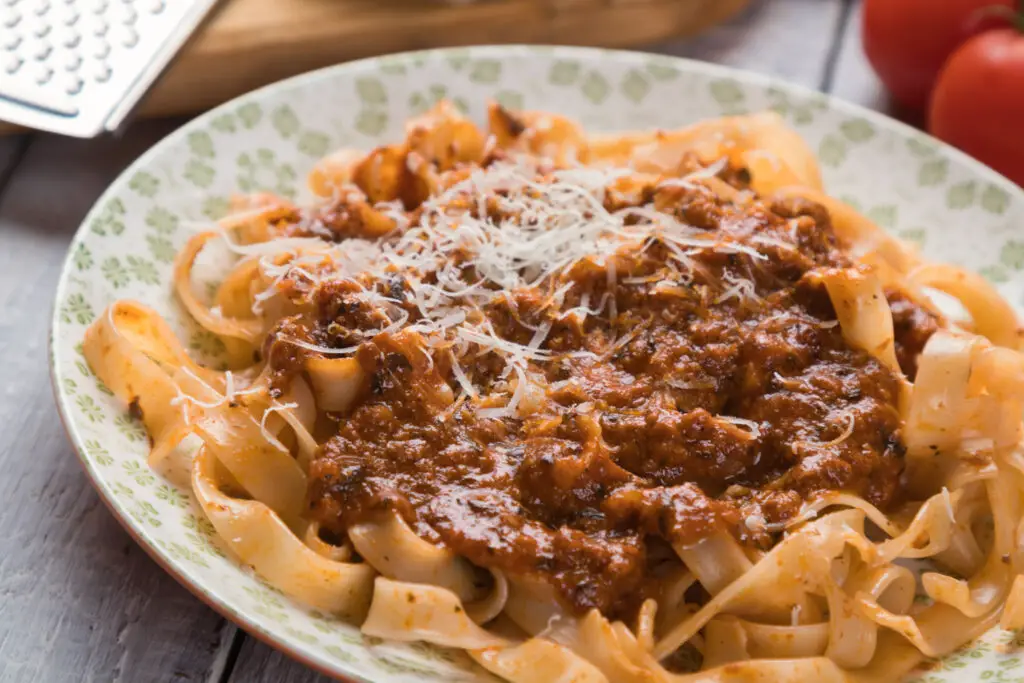
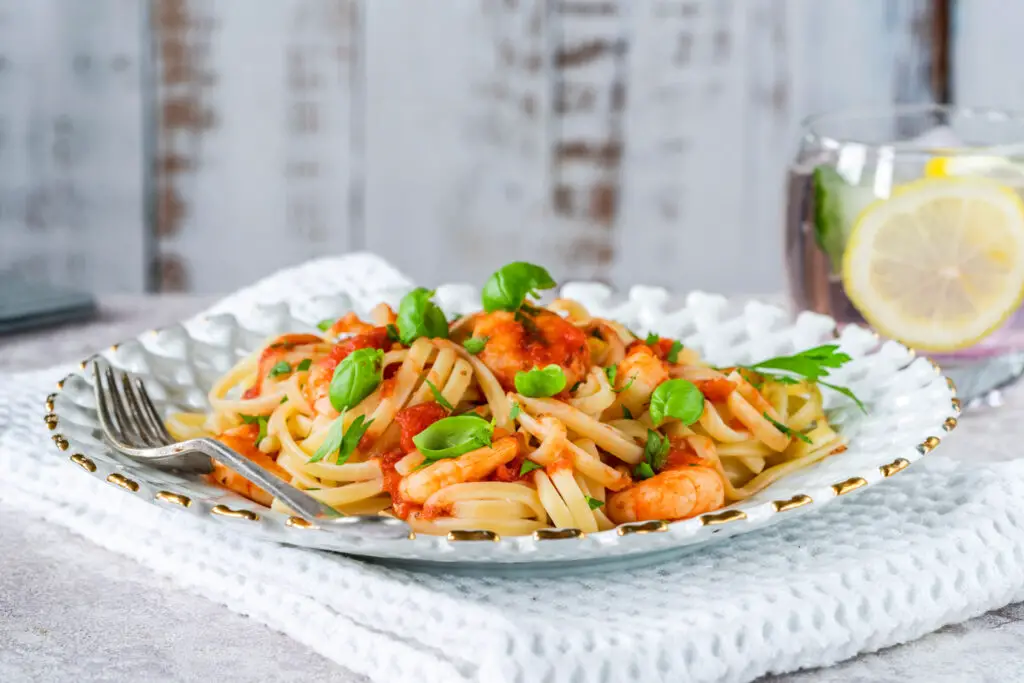
Your sauce choice should complement the pasta’s texture and shape. Let’s break down the perfect sauce companions:
- Fettuccine:
- Cream-based sauces: like Alfredo, because its broad, flat noodles can carry the thick sauce well.
- Meat sauces: These work beautifully with their sturdy structure.
- Linguine:
- Seafood sauces: especially classic with white wine clam sauce, thanks to its delicate nature.
- Lighter oil-based sauces: like a simple pesto, pairing well with its slimmer form.
These pairings ensure that each pasta gets coated nicely, giving you a well-balanced bite every time.
Regional Variations
Finally, your pasta preference might align with the regional traditions of Italy.
- Linguine is a staple in the Liguria region, a coastal area famous for its seafood dishes.
- Fettuccine is often associated with Tuscany and Rome, where heartier meats and cream sauces are prevalent.
Understanding these regional nuances can add an authentic touch to your culinary creations. Next time you’re in charge of dinner, remember these facts when choosing between fettuccine and linguine.
Fettuccine vs Linguine: Popular Dishes
When you’re deciding between thick fettuccine noodles and thinner linguine, the sauces and ingredients you want to pair them with are crucial. Let’s dive into some mouth-watering dishes that highlight the best of these pastas.
Classic Fettuccine Alfredo
Once you taste Fettuccine Alfredo, you’ll understand its timeless appeal. The dish combines fettuccine pasta with a rich and velvety alfredo sauce, which is a mix of butter, heavy cream, and freshly grated Parmesan cheese. It’s a must-try for creamy sauce lovers.
- Sauce: Creamy alfredo
- Common Additions: Chicken, shrimp, or broccoli
Linguine with Clam Sauce and Other Seafood
Linguine is often your go-to for a seafood embrace. Try it with a Linguine with Clam Sauce, where tender clams are simmered in a sauce featuring garlic, white wine, and olive oil. For an extra touch, herbs like parsley add freshness.
- Sauce: Olive oil-based, light sauces
- Seafood Variations: Scallops, mussels, or a mix for a seafood medley
Pairing with Different Sauces
You’ve got a wealth of sauce options, and each one can transform your pasta dish.
- Pesto: Basil-based pesto sauce is vibrant with linguine, especially when you want something lighter.
- Tomato-Based: Robust tomato or meat sauces, like bolognese or ragu, work well with both kinds of pasta.
- Carbonara: While traditionally paired with spaghetti, a quick and creamy carbonara can be delightful with fettuccine.
- Cream-Based: Other cream-based options include a creamy pesto or variations of alfredo suited to your taste.
Fettuccine vs Linguine: Cooking Techniques
When cooking fettuccine or linguine, mastering a few techniques will ensure your pasta is flavorful and has the right texture.
Achieving the Perfect Al Dente
Timing is key to cooking fettuccine or linguine al dente, which means “to the tooth” in Italian. Start tasting the pasta a couple of minutes before the package instructions say it should be done. It should have a slight resistance when bitten but not be hard in the center.
- Fettuccine: Typically cooks in 10-12 minutes.
- Linguine: Usually takes about 9-11 minutes.
Sauce Preparation and Integration
For a harmonious dish, your sauce should cling to the pasta, not pool at the bottom of the bowl. Here’s how to achieve that:
- Reserve Pasta Water: Before draining, save at least a cup of the pasta cooking water.
- Combine: Return pasta to the pot on low heat. Add your sauce and a splash of pasta water.
- Toss and Coat: Stir or toss until the sauce emulsifies and coats the pasta evenly.
If you enjoyed this look at fettuccine vs linguine, you might like one of these:

